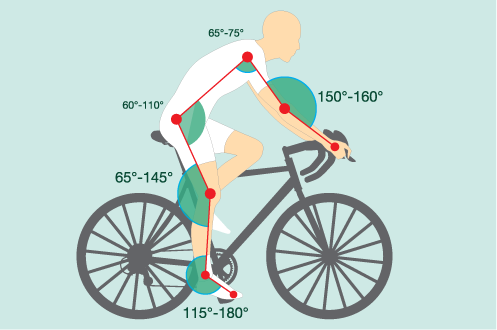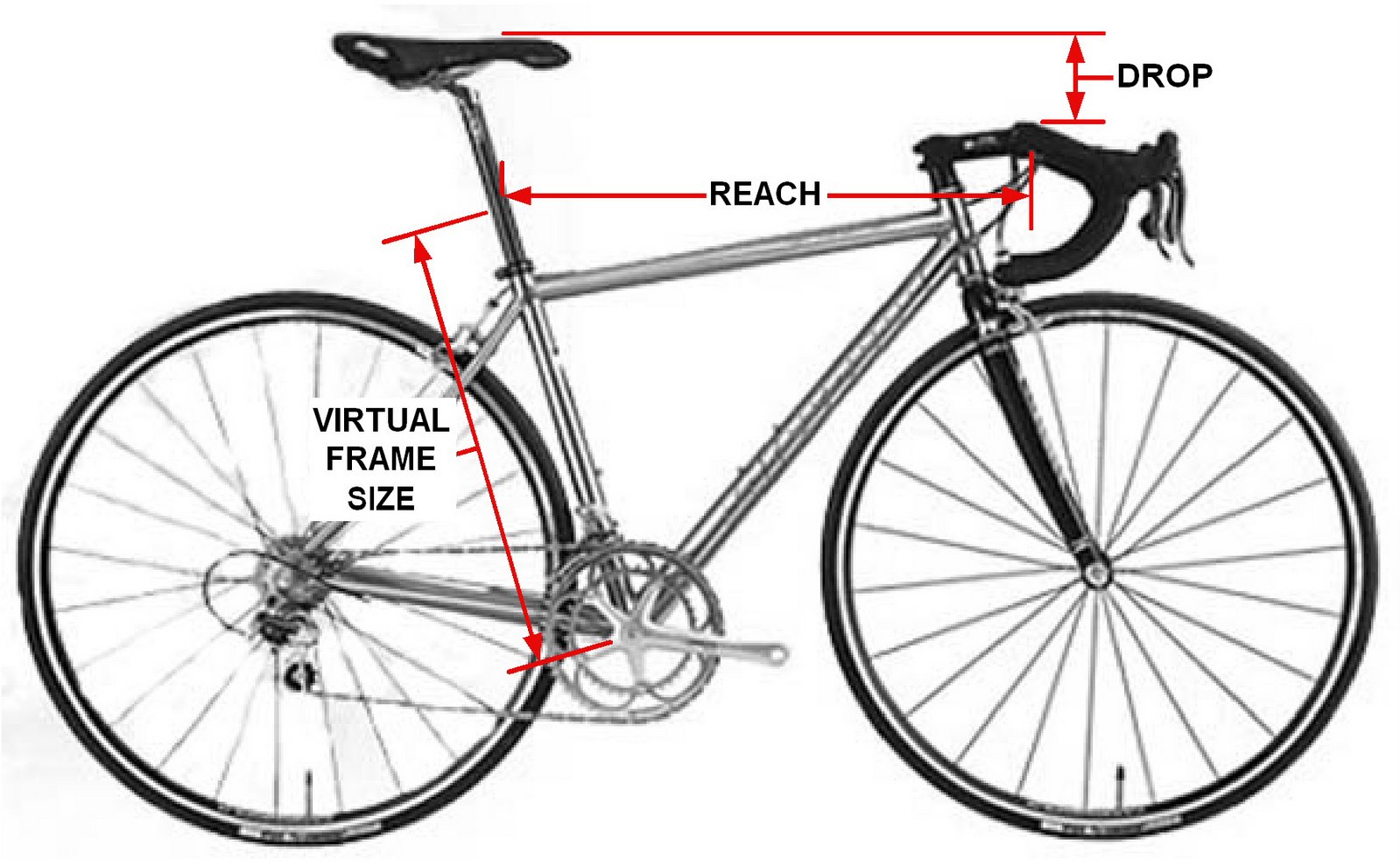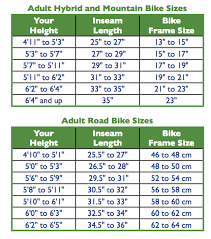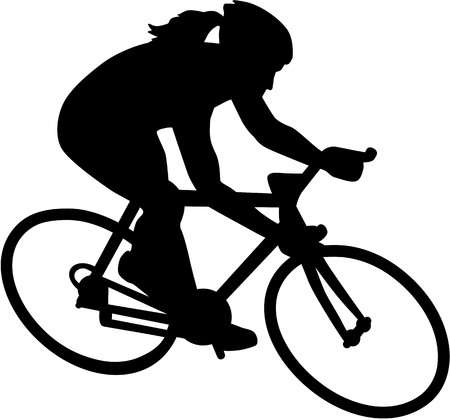Size of Bike
Bike Werks Mobile Bike Shop understands that bikes are fascinating things. They’re all around us, we’re used to seeing them and we overlook the complexity of these efficient machines. Name another device where a person climbs aboard and becomes the engine, the transmission, the guidance system and the braking system. Contact points include the pedals, the saddle and the
handlebars. As you turn the pedals, your feet, ankles, knees and hips all go into motion. Having the right distance between the saddle and the pedals is important for comfort and efficiency. Having the right distance between the saddle and handlebars is as equally important. To set the right vertical distance, the seatpost can be adjusted up and down, and the saddle adjusted fore and aft. Stick with me – to understand the sizing of a bike, you need to know a couple of things.
The bearing on which the pedal arms spin is called the bottom bracket. The uppermost horizontal bar spanning from the saddle to the handlebars is called the top tube. Most bikes are sized according to the distance between the bottom bracket and the top tube, be it in inches, centimeters, or a simple small, medium and large. You might think, “hey, if the seat post can be adjusted up and  down, getting the right size bike isn’t really that important after all”… and you’d be wrong. You have to consider a second measurement – that being the distance between the saddle and the handlebars or the reach. A medium frame will have a shorter reach to the bars than a large frame. Now I’m going to add yet another ingredient to the mix. The handlebars are attached to the bike with what’s called a stem. Similar to the seatpost, the handlebars can be adjusted fore and aft and up and down by swapping out the stem, or changing the handlebars all together.
down, getting the right size bike isn’t really that important after all”… and you’d be wrong. You have to consider a second measurement – that being the distance between the saddle and the handlebars or the reach. A medium frame will have a shorter reach to the bars than a large frame. Now I’m going to add yet another ingredient to the mix. The handlebars are attached to the bike with what’s called a stem. Similar to the seatpost, the handlebars can be adjusted fore and aft and up and down by swapping out the stem, or changing the handlebars all together.
“So how do I find my size?”, you may ask. If you’re not getting guidance from a bike shop (or even if you are), I suggest that you refer to the size charts that each manufacturer puts out for their bikes based on your height and inseam. In addition, there’s no shortage of third party sizing charts like the one below. If you’re an in between size, nothing beats a test ride to find your preference.
Most bike shops offer fitting services usually geared for road bike purchases. There’s usually different rates for if you’re buying your bike there vs bringing in your existing or one you bought somewhere else. For a road bike, I highly recommend a fitting. For hybrids and mountain bikes, my personal opinion is that you can get by without one as long as you picked out the right type and size. You can make adjustments on your own in the first few rides. Most seat-posts have quick-release clamps so you can adjust the saddle up and down without tools, making it easier to find that sweet spot. It’s a little more involved adjusting the saddle fore and aft and the handlebar reach. Feel free to reach out to Bike Werks Mobile Bike Shop if you’re having trouble getting comfortable.
One last note. Awhile back, bike manufacturers started offering women’s specific bikes. Bikes came with different saddles, narrower handlebars, shorter cranks, closer brake lever reach and a specific frame geometry for the average female frame. In addition, ma ny have lower stand-over heights when straddling the bike. Womens specific bikes are designed for your average woman with longer legs and the proportionally stronger lower body.
ny have lower stand-over heights when straddling the bike. Womens specific bikes are designed for your average woman with longer legs and the proportionally stronger lower body.
